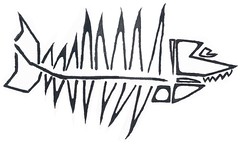
Reading a scholarly article can seem daunting at first. Scholarly articles are long and have a lot of data. If you break down the article into components, it will make it easier to read and understand.
For a quick overview, click on the link below to see an example of a scholarly article and its parts.
Need help with your literature review? Here are various tips and tools for beginners and pros.
You probably already know that you should always cite your sources when you use a direct quotation.
But as an academic writer, who synthesizes ideas from lots of places into their work, you will also need to paraphrase and summarize ideas from others -- and it is just as important that you cite those sources!
UCLA has created a very helpful guide about Quoting, Paraphrasing and Summarizing to guide you as you integrate sources into your work.
For more help, consult OSU Libraries's guide to Academic Integrity.
Copyright law applies to nearly all creative and intellectual works.
A wide and diverse range of materials are protectable under copyright law. Books, journals, photographs, art, music, sound recordings, computer programs, websites, and many other materials are within the reach of copyright law. Also protectable are motion pictures, dance choreography, and architecture. If you can see it, read it, hear it, or watch it, chances are it is protectable by copyright law.
Works are protected automatically, without copyright notice or registration.
These many different works are protected under copyright if they are "original works of authorship" that are "fixed in any tangible medium of expression." In other words, once you create an original work, and fix it on paper, in clay, or on the drive of your computer, the work receives instant and automatic copyright protection. The law today does not require placing a notice of copyright on the work or registering the work with the U.S. Copyright Office. The law provides some important benefits if you do use the notice or register the work, but you are the copyright owner even without these formalities.
Copyright protection lasts for many decades.
The basic term of protection for works created today is for the life of the author, plus seventy years. In the case of "works made for hire", copyright lasts for the lesser of either 95 years from publication or 120 years from creation of the work. The rules for works created before 1978 are altogether different, and foreign works often receive distinctive treatment. Not only is the duration of copyright long, but the rules are fantastically complicated.
Works in the public domain.
Some works lack copyright protection, and they are freely available for use without the limits and conditions of copyright law. Copyrights eventually expire, and the works enter the public domain. Works produced by the U.S. government are not copyrightable. Copyright also does not protect facts, ideas, discoveries, and methods.
(Used under a Creative Commons BY-NC license from the Copyright Advisory Office of Columbia University, Kenneth D. Crews, director.)
Citation styles vary widely by journal. Check the journal's website to see if they provide citation instructions under a section typically called "instructions for authors." If you can't find this information on the website, use the references section of the journal article you want to model your references after as an example. Pay particular attention to the order they place the information in, whether or not they use italics or bold, how they abbreviate journal titles, and how they use punctuation.
example. Pay particular attention to the order they place the information in, whether or not they use italics or bold, how they abbreviate journal titles, and how they use punctuation.
Here are links to the citation guidelines for several journals used in Fisheries and Wildlife.
Did you know there are free tools available to help you automatically format your bibliographies and organize all those articles, books and websites you find?
